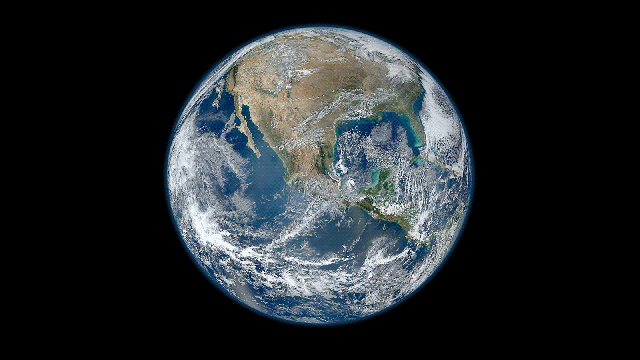Earth is losing some of its glow, a study published in Geophysical Research Letters last week shows. It appears climate change and a natural climate shift have essentially scuffed up our planet. We really can’t have nice things, can we folks?
The study takes a look at earthshine, or the light reflected from the planet that casts a faint light on the surface of the Moon. It’s also known as the Da Vinci Glow, because Leonardo da Vinci was the first person to formally write about it. Research has advanced quite a bit since da Vinci’s writing 500 years ago, and the new findings use two decades of earthshine data collected at Big Bear Solar Observatory using a special type of telescope to view the Moon.
The best time to observe earthshine is when the Moon is waxing or waning. Look at the Moon then, and you may be able to make out a faint outline of the whole Moon in addition to the sliver brightly illuminated by the Sun. That ghostly outline is thanks to earthshine, caused by the sunlight reflecting off our planet.
The observatory is perfectly situated to measure earthshine for 40% of the planet, spanning the Pacific and parts of North America. Analysing the data for roughly 800 nights between 1998 and 2017 showed a small but significant decline in earthshine. There were some year-to-year shifts, but the paper notes that those are “quite muted, with a long-term decline dominating the time series.”
The scientists used satellite data to gauge what drove the dimming. Land, ice, clouds, and open ocean all have different levels of reflectivity that contribute to earthshine. (The reflectivity of different surfaces is also referred to as albedo.) The findings point to the disappearance of clouds in the tropical Pacific as the culprit in dulling Earth’s shine. “The albedo drop was such a surprise to us when we analysed the last three years of data after 17 years of nearly flat albedo,” said Philip Goode, a researcher at New Jersey Institute of Technology and the lead author of the report, in a statement.
Because the data spans 20 years, it also includes two solar cycles. The Sun goes through 11-year periods of increasing and decreasing activities, and it’s a favourite climate denier explanation for climate change. Just as climate scientists have politely but firmly noted “no, that is very wrong,” the researchers here did the same.
“Our data, therefore, do not support an argument for any detectable imprint of direct or indirect solar activity mechanisms on the Earth’s reflectance over the past two decades,” they wrote. In other words, it’s not the damn Sun getting dimmer, it’s Earth. Seriously, please stop blaming the Sun. What did it ever do to you?
Instead, the findings point to two possible culprits that could even be working in tandem. Climate change has cranked up the heat everywhere, including in the oceans. That could be decreasing cloud cover in the region. So, too, could a change in what’s known as the Pacific Decadal Oscillation, a natural climate shift that turned to a warm phase after 2010 and could also have the same impact on clouds.
This may seem like a trivial matter, but it’s actually quite worrisome. Lowering Earth’s albedo means that more incoming solar energy reaches the planet. The added greenhouse gases from burning fossil fuels mean that extra energy is trapped here as heat. Not good!
Measuring earthshine on the Moon may seem like a weird way to keep tabs on the climate of, well, Earth. But the researchers note that unlike satellites staring at Earth, which can experience instrument drift, measuring earthshine is a relative measurement allowing for more consistent readings. They make a plea for more earthshine research, which is honestly fascinating and weird enough for us to want more of.
The dip in earthshine adds to the litany of weird climate findings to come out recently. Among them are the crust of Earth shifting in weird ways and the planet’s axis wobbling in new ways. It’s not clear what else climate change will mess up, but we should expect the unexpected.
